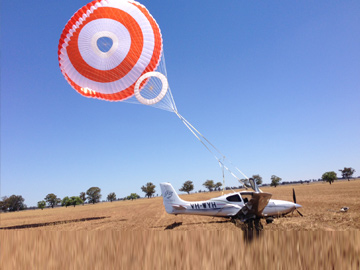
The ATSB’s investigation into the engine failure of a Cirrus SR22 aircraft shows why it’s vital to always follow the aircraft manufacturer’s operating guidance.
During a flight from Emerald, Queensland to Dubbo, NSW on 21 November 2012, the engine indications on the Cirrus SR22 were showing a gradual loss of oil pressure. Despite the pilot’s operating handbook advising the pilot to promptly land the aircraft to find the cause of the oil pressure loss, he decided to monitor the situation after contacting the maintenance organisation for advice.
The oil pressure continued to drop and eventually the engine failed when the aircraft was 11 minutes from Dubbo, near Gilgandra. The pilot was not able to land at the Gilgandra airport and elected to deploy the ballistic parachute system fitted to the aircraft. The aircraft landed upright in a paddock and fortunately, the pilot and the passenger escaped with minor injuries.
The pilot commented that the oil pressure indication dropped very gradually, giving a false sense of security. Three or four weeks previously, the aircraft’s engine temperature probe had failed. As the engine cylinder head temperature and oil temperature indications remained in the normal range, the pilot thought that the low oil pressure may have indicated another faulty probe.
The aircraft had flown only around 4 hours following a 100 hour maintenance check. When the pilot conducted the pre-flight check for the accident flight, he noted that the oil level was below 5 quarts and 1 L of oil was added to the engine. The pilot’s operating handbook notes that the engine should not be operated with less than 6 quarts of oil and 7 quarts is recommended for extended flights.
Read the report: Engine failure involving a Cirrus SR22, VH-WYH, 7 km south of Gilgandra (ALA), New South Wales, on 21 November 2012


